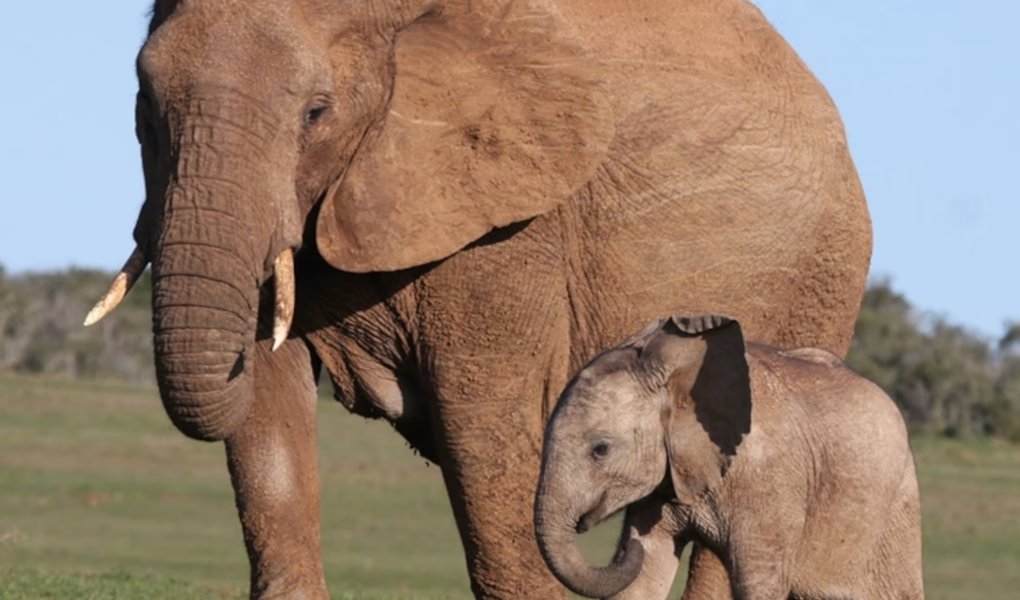marwaarsanios.info – The African elephant, known for its immense size, intelligence, and strong social bonds, is one of the most iconic and revered animals on Earth. As the largest land mammal, the African elephant has captured the imagination of people worldwide, symbolizing the wild beauty and complexity of Africa’s diverse ecosystems. However, despite their grandeur, African elephants face numerous threats, particularly from poaching and habitat loss. This article delves into the physical characteristics, behavior, habitat, conservation status, and the critical efforts underway to protect these magnificent creatures.
Physical Characteristics
African elephants are the largest land mammals, with adult males (bulls) typically weighing between 5,000 and 14,000 pounds (2,270 to 6,350 kilograms) and standing up to 13 feet (4 meters) tall at the shoulder. Females are smaller, with a weight range of 3,000 to 8,800 pounds (1,360 to 4,000 kilograms).
One of the most distinguishing features of the African elephant is its large ears, which help regulate body temperature by releasing excess heat. These ears are shaped like the African continent, a feature unique to African elephants. In contrast, Asian elephants have smaller, rounder ears. African elephants also have two “fingers” at the tip of their trunks, which they use to grasp objects, while Asian elephants have just one.
The trunk itself is an incredibly versatile and sensitive organ, containing around 40,000 muscles. Elephants use their trunks for a variety of purposes, including drinking, picking up objects, social interactions, and even communication. Their tusks, which are elongated incisor teeth, are made of ivory and continue to grow throughout their lives. Tusks serve multiple functions, including foraging for food, digging for water, and defending against predators.
Habitat and Distribution
African elephants are found across a wide range of habitats, from the savannas and grasslands to forested areas and deserts. They are primarily distributed in sub-Saharan Africa, with some populations also found in parts of West and Central Africa. African elephants are divided into two subspecies:
- The Savannah Elephant (Loxodonta africana): This is the larger of the two subspecies, living in open savannas, grasslands, and forests in regions such as East Africa, Southern Africa, and parts of Central Africa. They are highly adaptable and often travel long distances in search of food and water.
- The Forest Elephant (Loxodonta cyclotis): Smaller than their savanna counterparts, forest elephants are found in the dense rainforests of West and Central Africa. They are more elusive and less well-known, but play a crucial role in maintaining the ecosystem by dispersing seeds and creating pathways through dense forests.
Both subspecies of African elephants are essential to their respective habitats. They are considered keystone species, meaning they have a significant impact on the environment and other species. For example, elephants help maintain the structure of their habitats by uprooting trees, creating clearings, and facilitating the growth of grasses that other herbivores depend on.
Social Structure and Behavior
Elephants are highly social animals, known for their strong family bonds and complex social structures. Their societies are matriarchal, meaning that the oldest and wisest female elephant leads the herd. The matriarch is responsible for making decisions regarding the herd’s movements and safety, and her experience is crucial for the survival of the group.
Herds typically consist of related females and their offspring, with males leaving the group when they reach maturity. Male elephants often live solitary lives or form loose associations with other males. Female elephants, on the other hand, remain in their maternal family groups for life.
Elephants are known for their remarkable intelligence and emotional depth. They exhibit behaviors that suggest empathy, self-awareness, and even mourning. There have been numerous documented instances of elephants mourning their dead, displaying behaviors such as gently touching the remains of deceased elephants with their trunks and standing quietly around the body.
Their communication is diverse and sophisticated, involving vocalizations (such as trumpeting, rumbling, and low-frequency sounds), body language (like ear flapping and trunk gestures), and even seismic signals. Elephants can communicate with each other over long distances by sending vibrations through the ground, which other elephants can detect with their sensitive feet.
Diet and Feeding Habits
African elephants are herbivores and require large amounts of food to sustain their massive bodies. An adult elephant can consume up to 300 pounds (136 kilograms) of food in a single day. Their diet consists mainly of grasses, leaves, fruit, bark, and shrubs. Elephants are also known to uproot trees and strip the bark to access the nutrients inside.
To support their energy requirements, elephants spend a significant portion of their day feeding, foraging for food across vast distances. In areas with limited water sources, elephants have also been observed digging for water with their tusks or trunks, creating temporary waterholes for other animals to use.
Because elephants are so large, they play a vital role in shaping the environment. Their feeding habits help control plant growth, and by uprooting trees, they create open spaces that allow other species to thrive. This ability to transform their environment is one of the reasons why elephants are considered keystone species.
Reproduction and Life Cycle
Elephants have a long gestation period, the longest of any land mammal, lasting about 22 months. This long period of development allows the fetus to grow large enough to survive in the harsh conditions of the wild. Female elephants typically give birth to one calf at a time, although twins can occur rarely.
Newborn calves are highly dependent on their mothers for care and protection. They weigh around 220 to 250 pounds (100 to 115 kilograms) at birth and are able to stand and walk within hours. Calves are nursed for up to two years, although they begin to eat solid food at around six months. The extended care that calves receive from their mothers and other members of the herd is crucial for their survival.
Elephants have a long lifespan, with many living 60 to 70 years in the wild. Older elephants, especially matriarchs, are highly respected in elephant society for their wisdom and experience.
Conservation Status and Threats
African elephants are currently classified as vulnerable by the International Union for Conservation of Nature (IUCN), with certain populations facing even greater risks. The main threats to elephants are:
- Poaching for ivory: Despite international bans on ivory trade, poaching remains a significant threat, as ivory is highly prized on the black market. Elephants are often killed for their tusks, which are sold for use in art, jewelry, and traditional medicine.
- Habitat loss: As human populations grow and expand into elephant habitats, elephants are losing their natural environments to agriculture, urbanization, and infrastructure development. Habitat fragmentation also makes it harder for elephants to find food, water, and migration routes.
- Human-wildlife conflict: As elephants move into agricultural areas in search of food, they often come into conflict with humans. Elephants can destroy crops, and in retaliation, they are sometimes killed by farmers or local communities.
- Climate change: Changes in climate patterns are affecting the availability of water and food in many regions, making it more difficult for elephants to survive.
Conservation efforts are underway to protect African elephants, focusing on reducing poaching, protecting habitats, and mitigating human-wildlife conflict. Anti-poaching laws and stronger enforcement measures are helping curb illegal hunting, while wildlife corridors and protected areas are being established to ensure that elephants have safe spaces to roam.
Additionally, international organizations and local communities are working together to promote sustainable coexistence between elephants and humans, including using innovative techniques such as beehive fences to deter elephants from raiding crops.
Conclusion
The African elephant is a symbol of strength, intelligence, and the wild beauty of Africa. As the largest land mammal, it plays a crucial role in shaping its environment and maintaining the health of the ecosystems in which it lives. However, with the ongoing threats of poaching, habitat loss, and climate change, the African elephant’s future hangs in the balance.
Protecting these magnificent creatures requires concerted global efforts, including stronger conservation policies, habitat preservation, and community engagement. By ensuring the survival of the African elephant, we can help preserve the biodiversity and ecological balance of Africa’s unique landscapes, securing a future where these majestic giants continue to roam the savannas and forests for generations to come.




